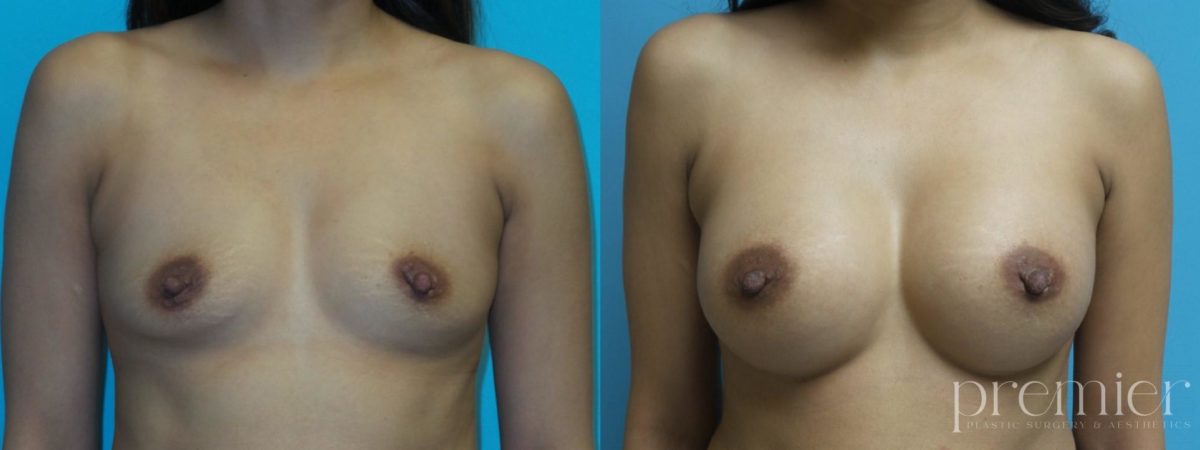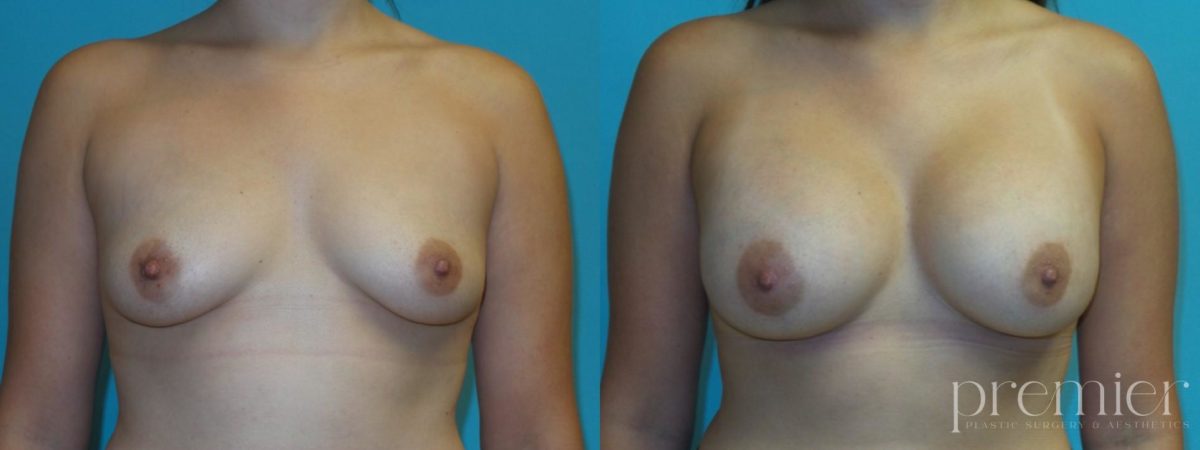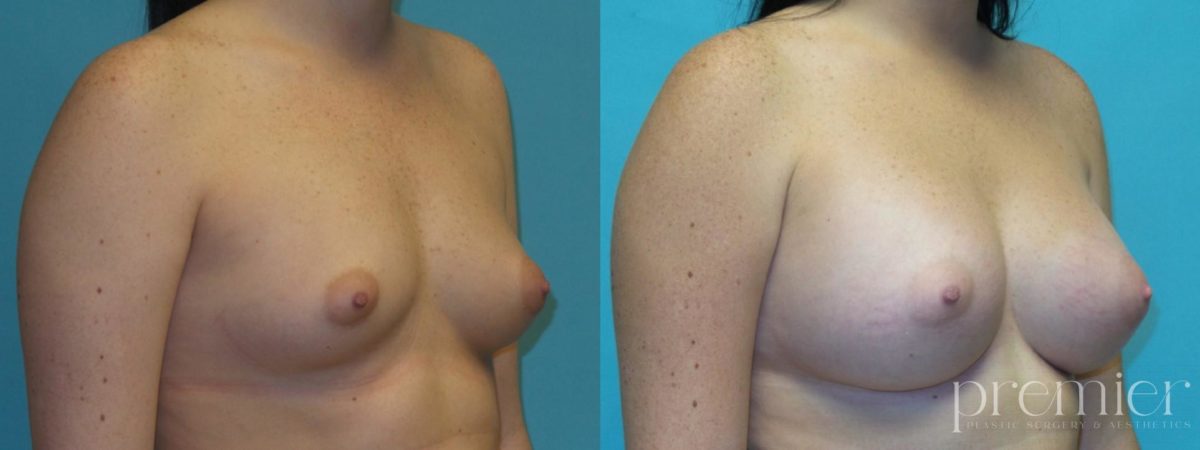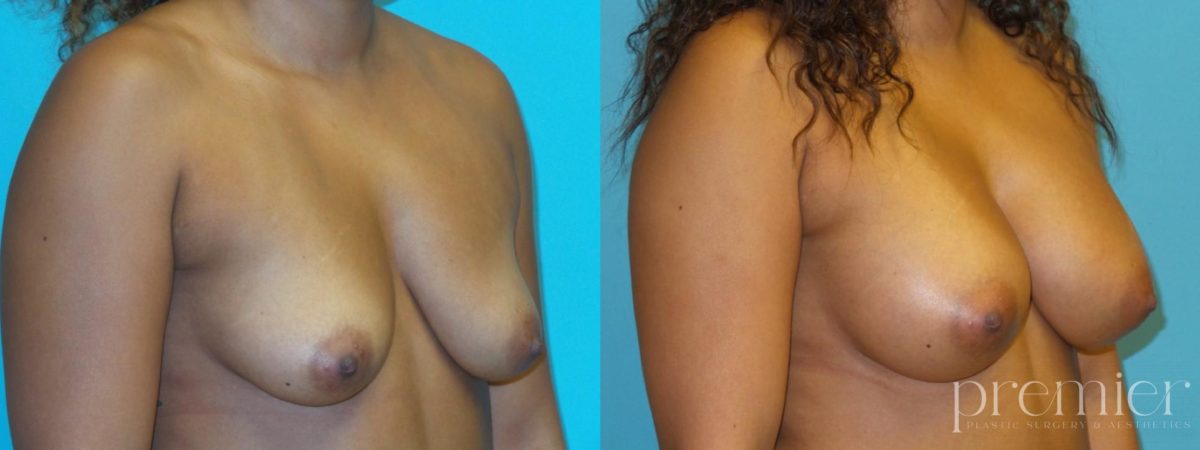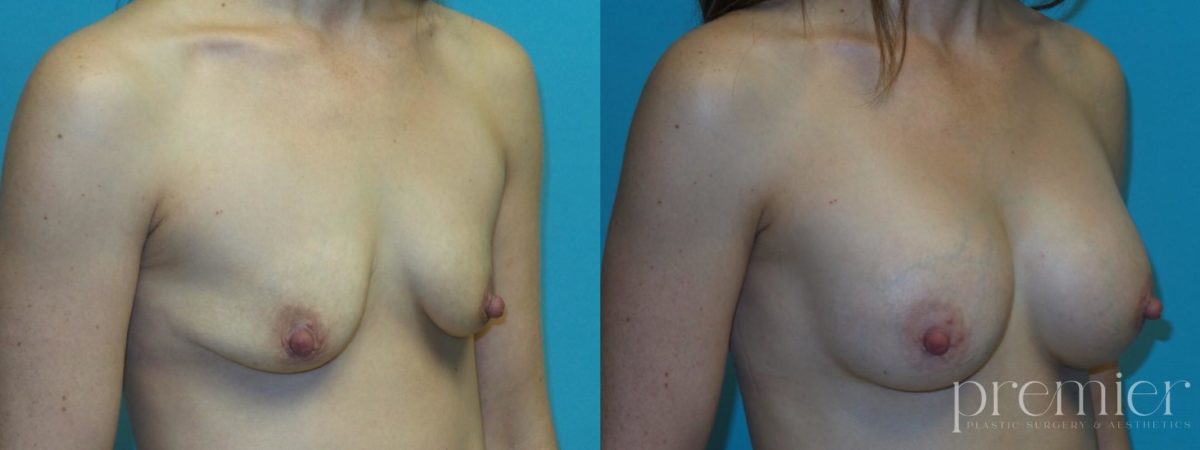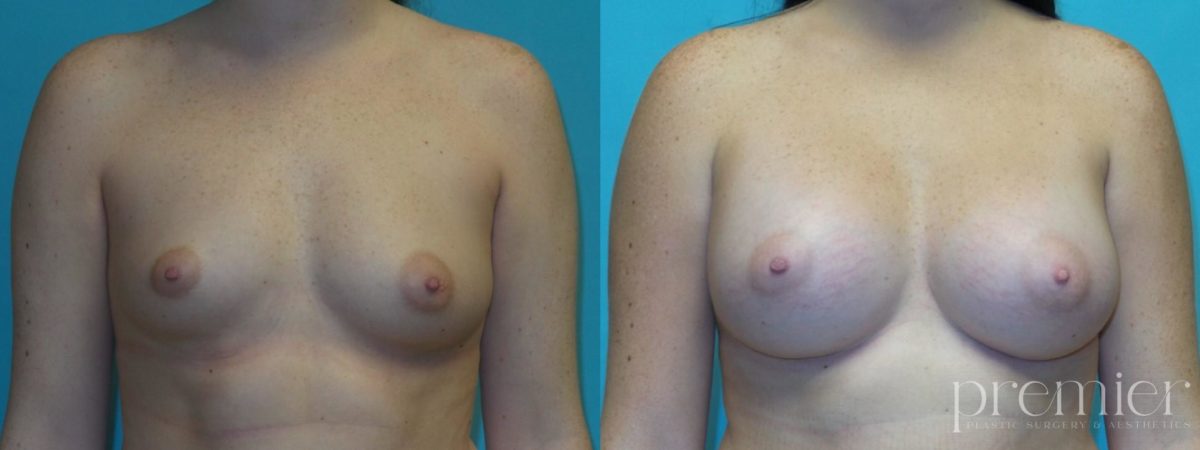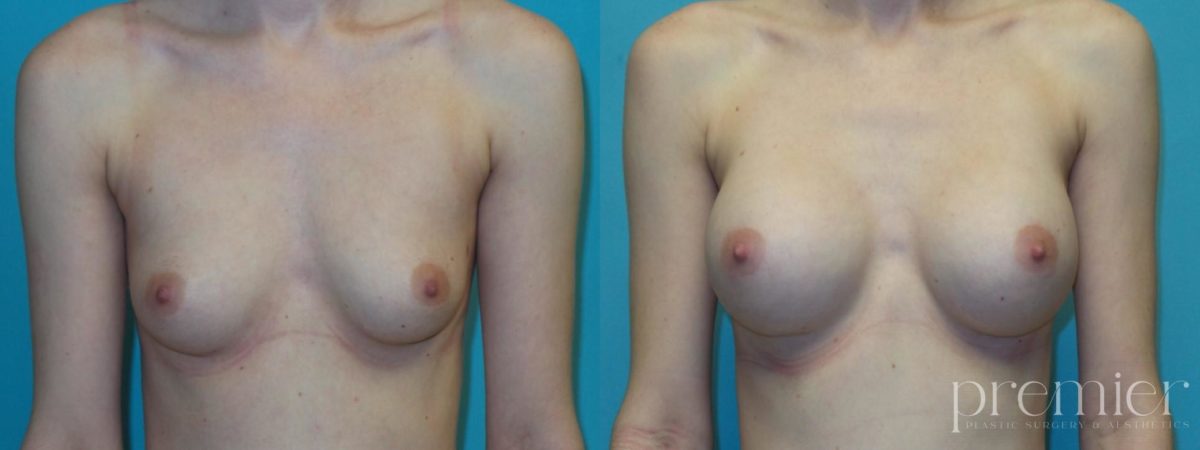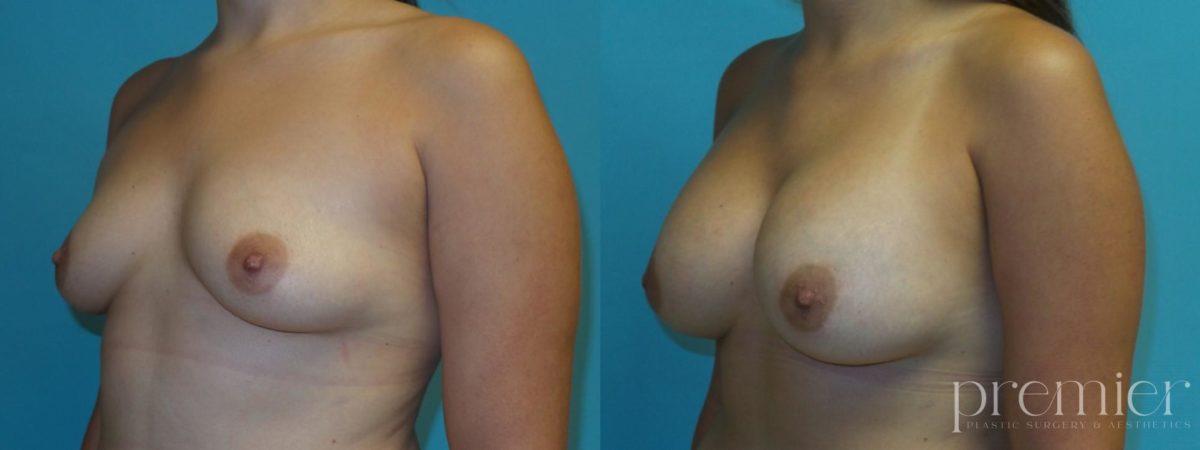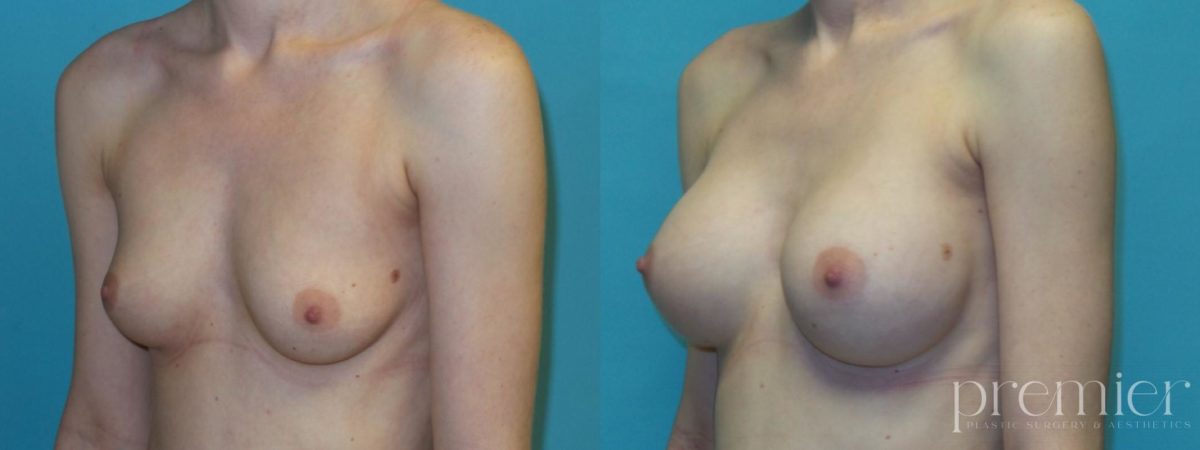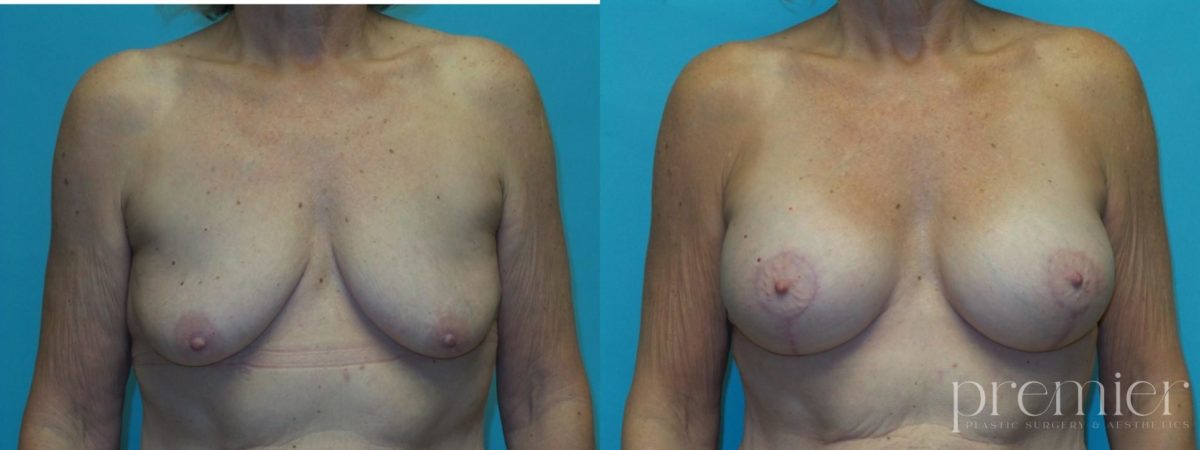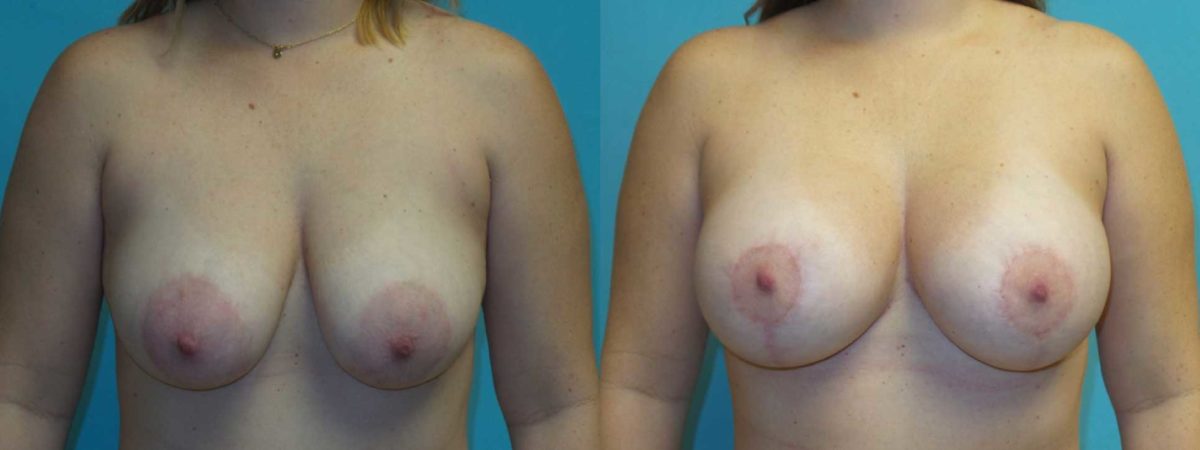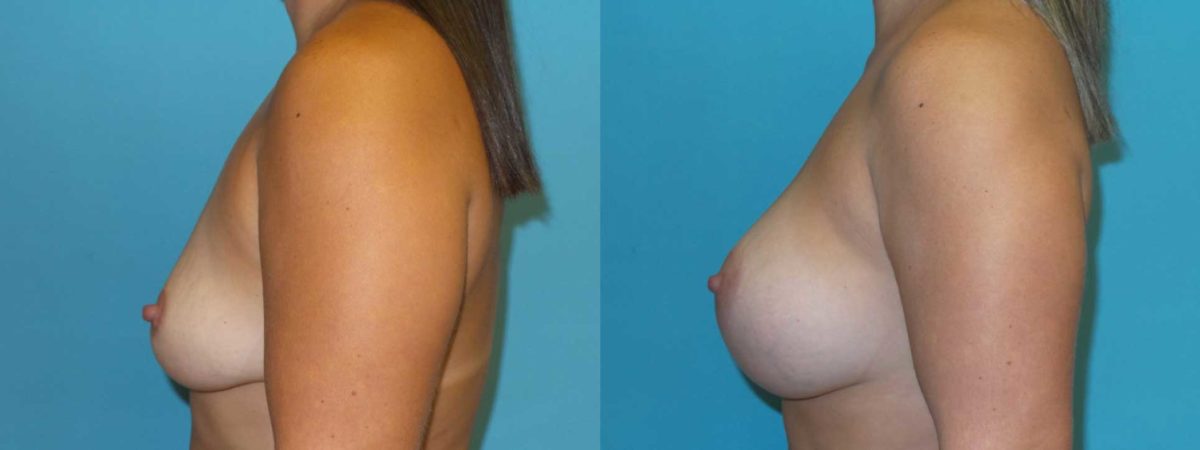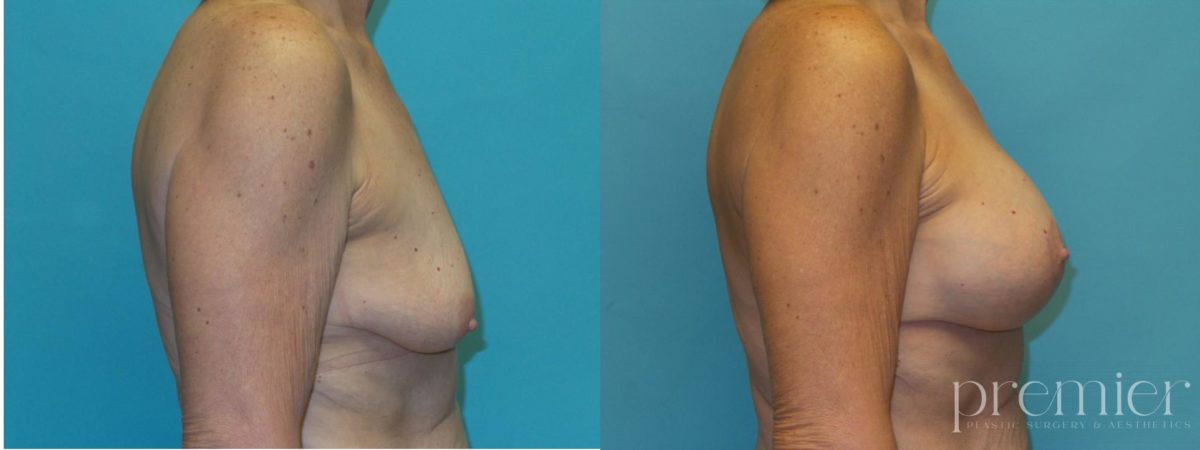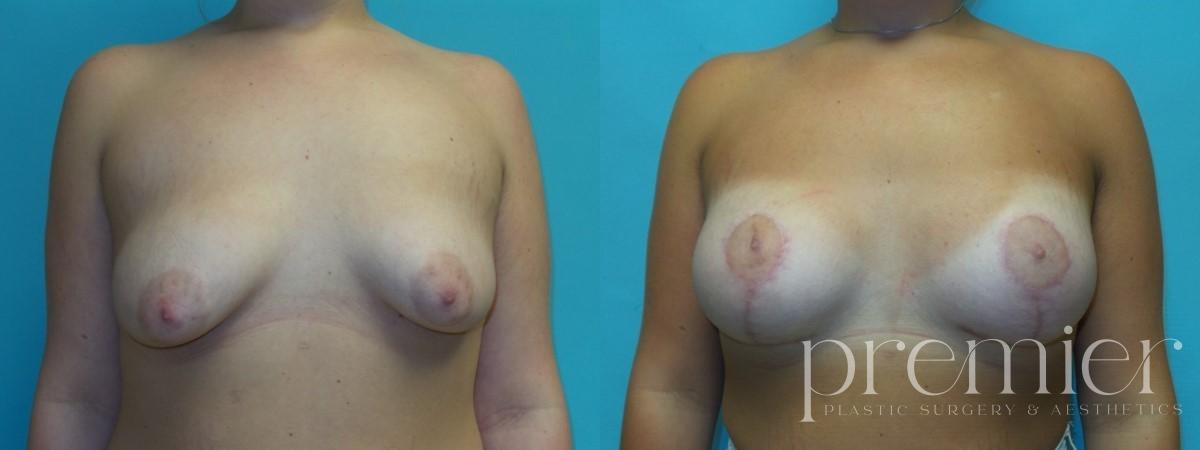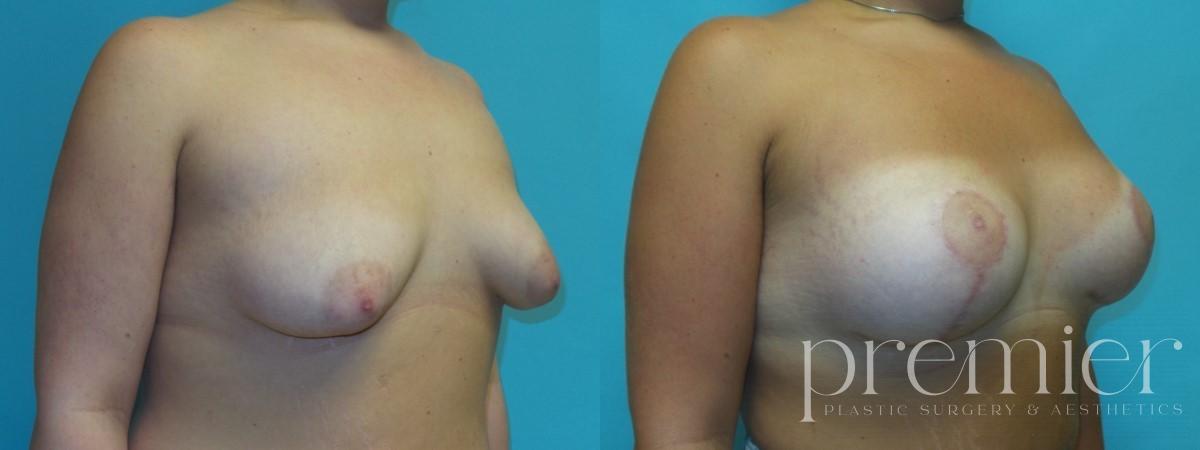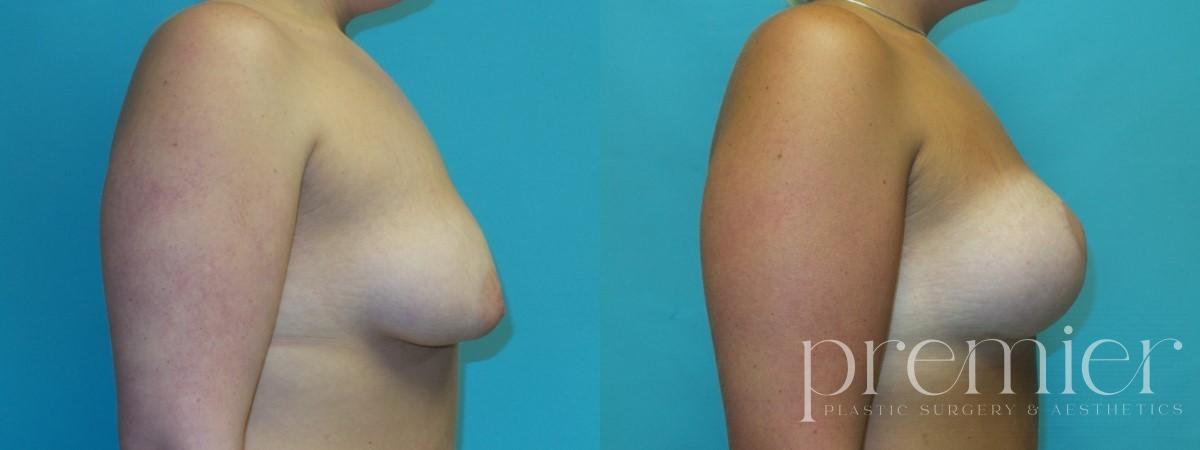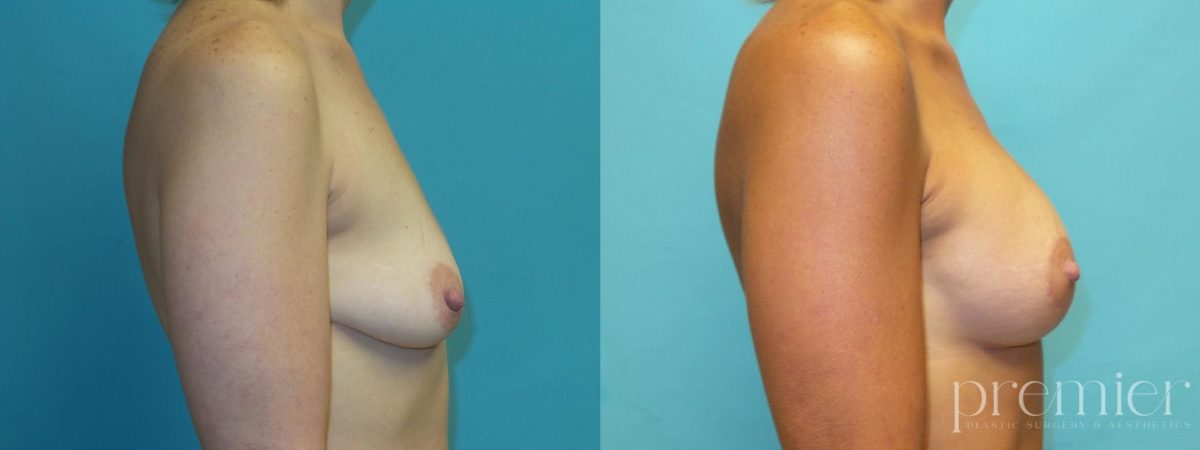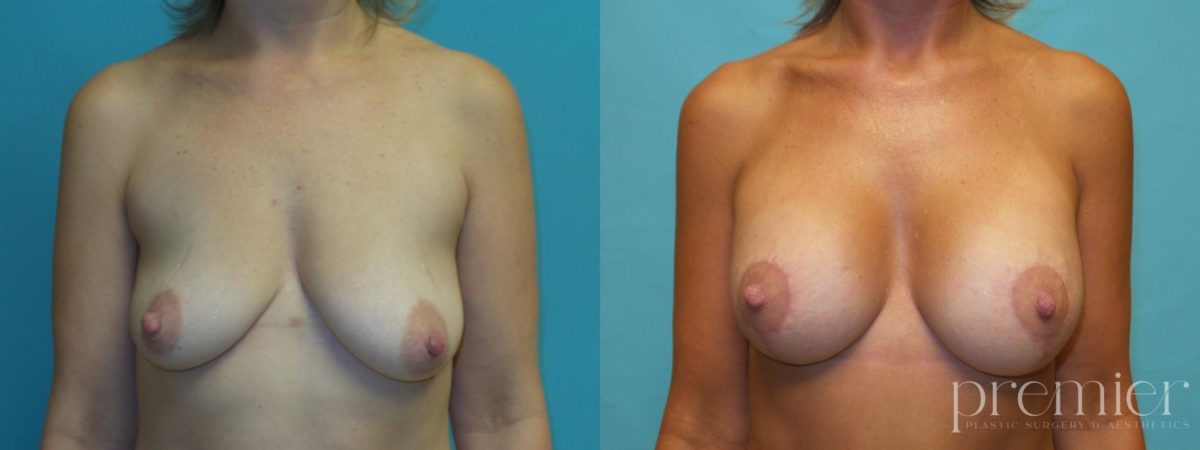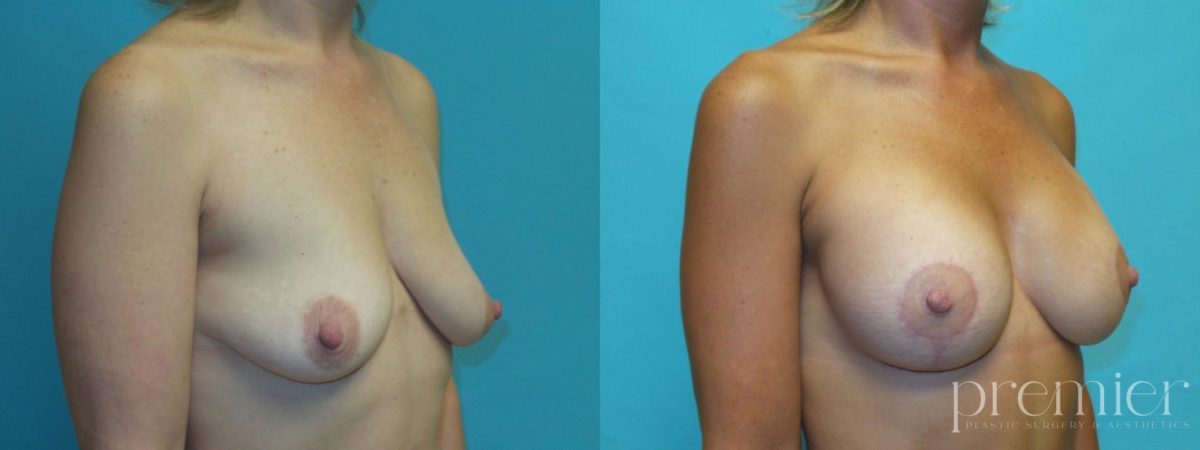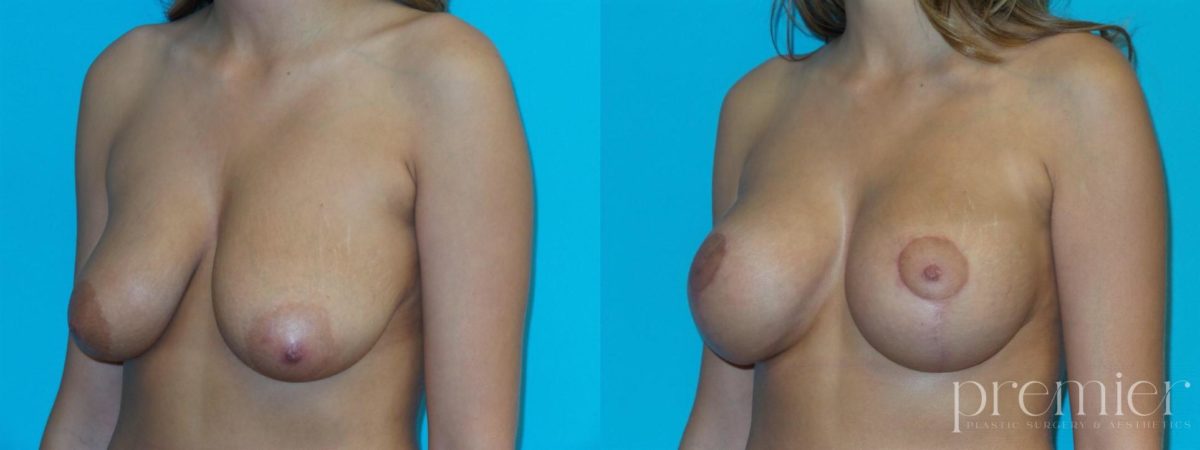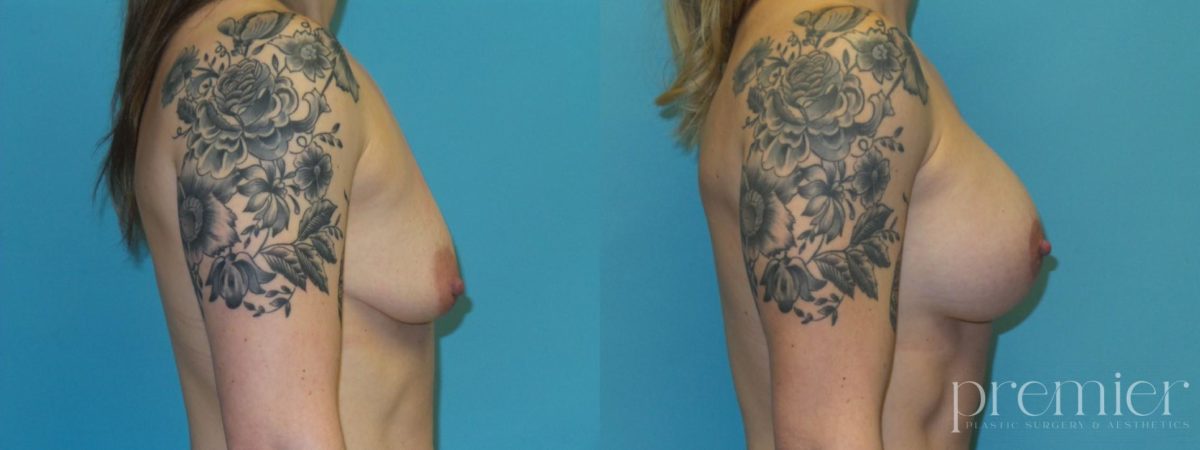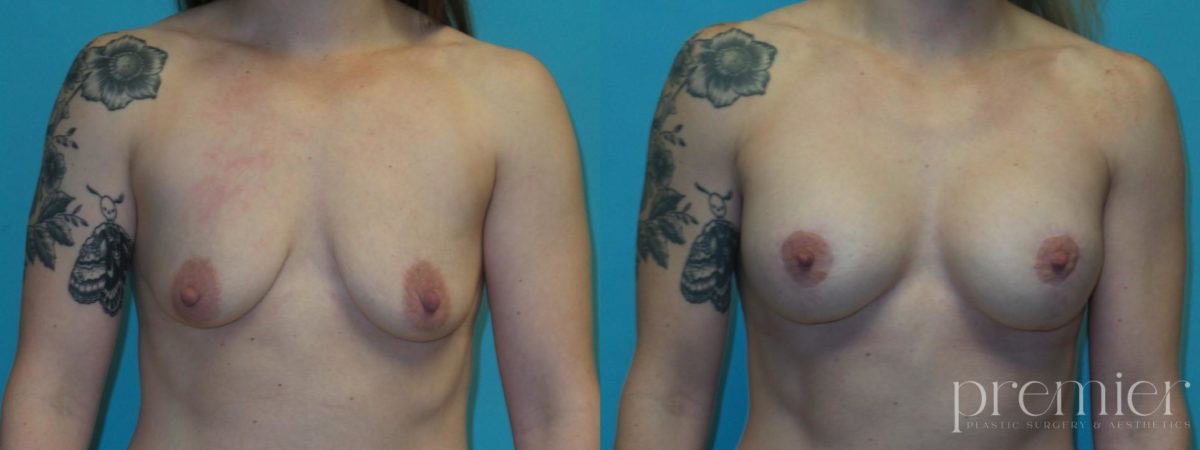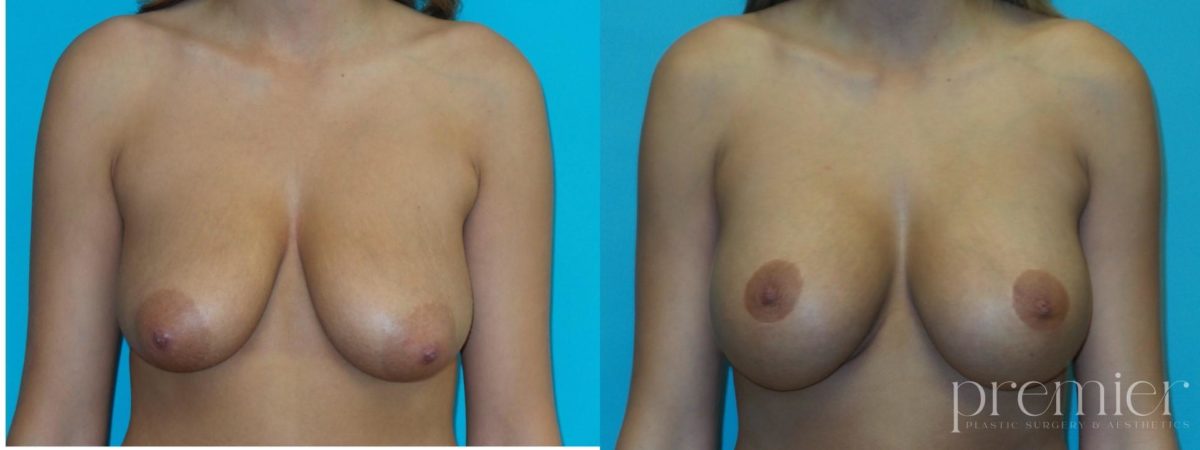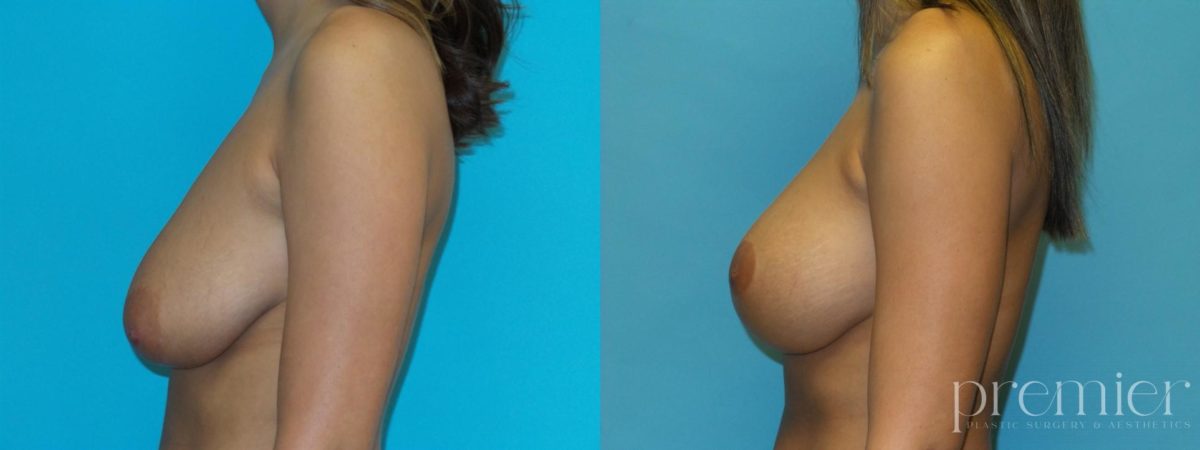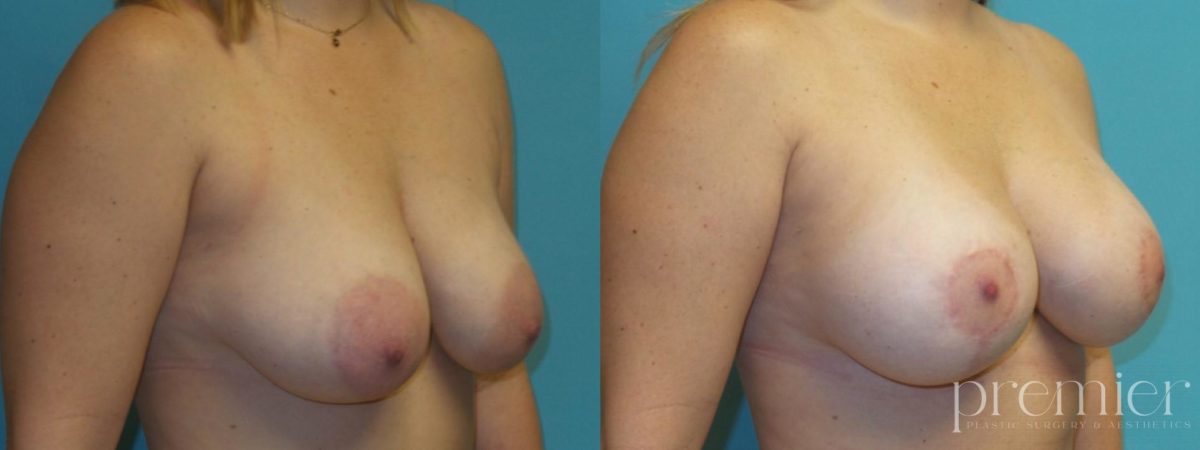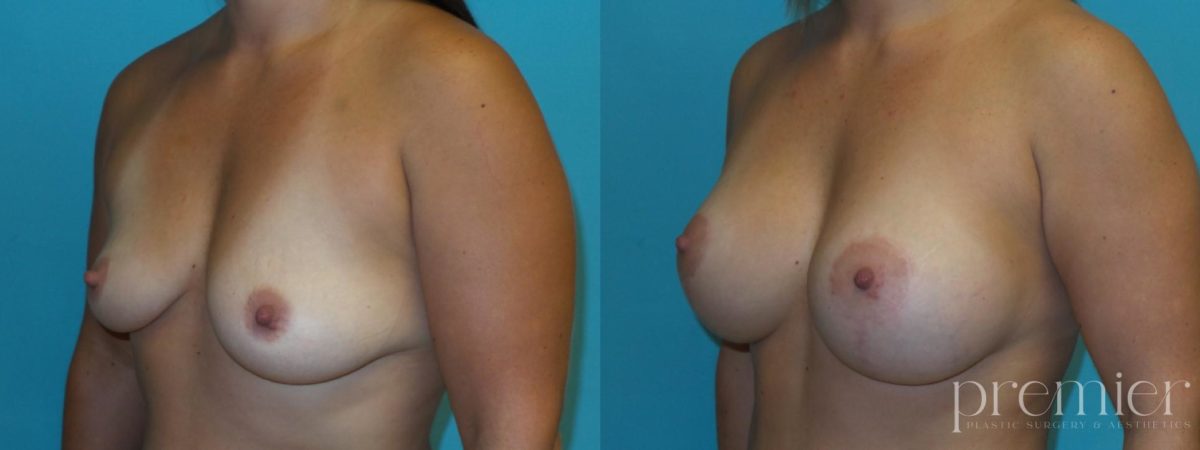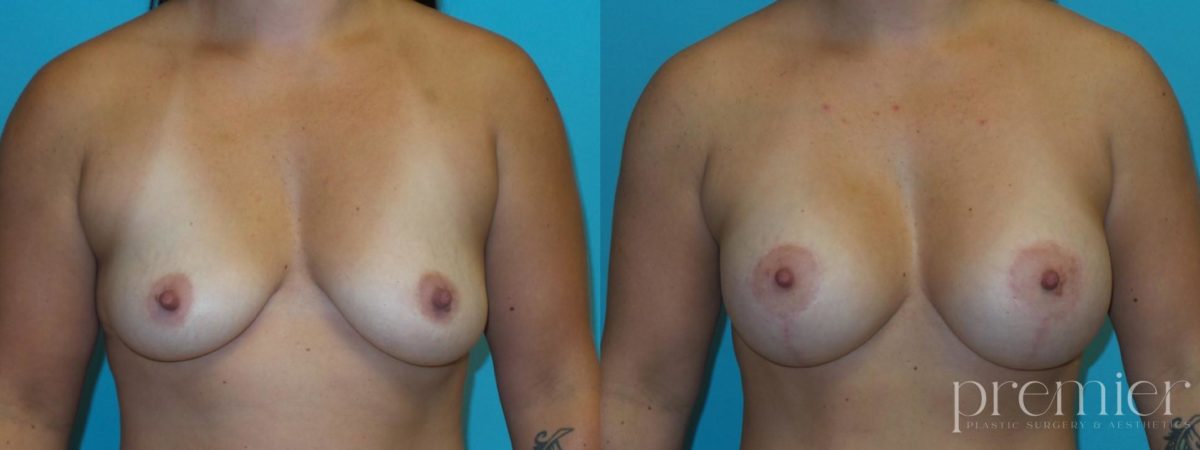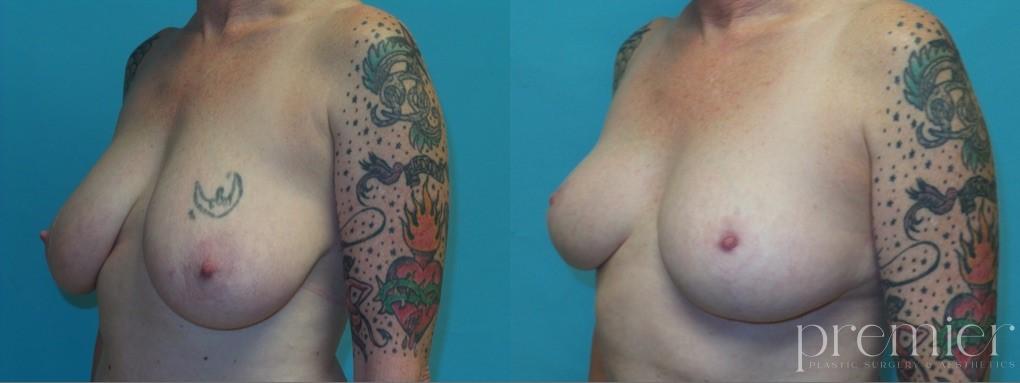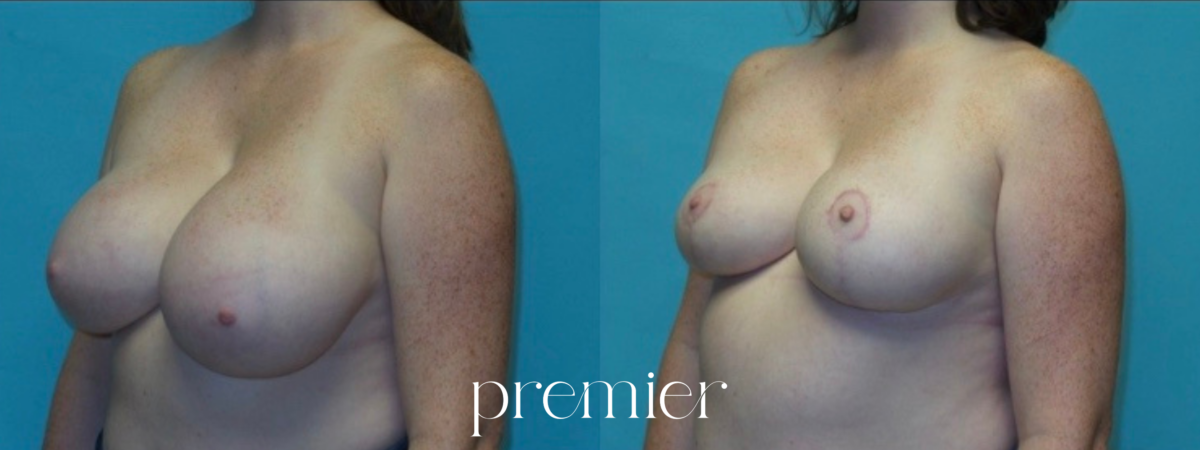Dr. Brou has the medical expertise and experience to help make sure you look and feel your best. If you are considering a breast augmentation surgery in Oklahoma City, let Dr. Brou and his knowledgeable staff assist you today.
Be sure to check out our before and after gallery at the bottom of this page.
Most Popular Breast Augmentation Procedures
What is breast augmentation?
Breast augmentation utilizes breast implants to create fuller, more flattering breasts. Dr. Brou has extensive experience in breast augmentation surgery, and his artistic ability has won praise from patients and medical professionals alike.
Why should I consider breast augmentation surgery?
Breast implants can increase the fullness, firmness, and projection of your breasts, and they can restore the desired proportion to your body. However, a breast augmentation alone can’t lift your breasts. If childbirth or extreme weight fluctuation has caused your breasts to droop or sag, Dr. Brou may recommend a breast lift in conjunction with your augmentation.
What should I expect during my consultation for breast augmentation surgery?
During your consultation for breast augmentation in Oklahoma City, Dr. Brou will talk to you about your cosmetic goals, so he can tailor his technique and choose the implant best suited to your cosmetic needs as well as your breast anatomy, skin elasticity, and body size and shape.
During your consultation, Dr. Brou will discuss what to expect during the processs of surgery and recovery. He will help you to choose the implant size after a trial of digital simulation along with the opportunity to try on breast implant sizers to give you an idea of what you will look like after the surgery. Many patients come back after their breast augmentation consultation to try the breast implant sizers on again, especially if their spouse or loved one was not able to attend the first meeting with Dr. Brou.
You will also have an opportunity to meet with our patient coordinator to get exact pricing and financing options if you choose to schedule surgery.
Are breast implants safe?
Breast implants have been proven very safe in years of clinical research, and they continue to improve in design and aesthetics. For more information we encourage you to visit the American Society of Plastic Surgery website for the latest information on breast implants.
What type of breast implant is right for me?
Dr. Brou will explain the relative benefits of different kinds of breast implants that are available on the market. Saline breast implants were very popular in the 90’s and early 2000’s because of concerns with silicone breast implants. After extensive research and a 14 year moratorium, silicone breast implants came back in 2006 upon approval by the FDA. The safety and efficacy of these devices was deemed satisfactory. Today there are many different kinds and styles of silicone breast implants so choosing can be rather confusing. Dr. Brou will explain the best choice for you based on his 26 year experience as a board certified plastic surgeon.
Common types of breast implant surgery incisions:
The most common incision is made below the breast in the mammary fold. This area tends to have the least complications and heal nicely. Areola incisions may be made especially when reducing the size of your areola. Incisions under the arm are normally made when using endoscopic equipment to place the implant.
What should I expect during recovery following breast augmentation surgery?
Breast augmentation is performed under general anesthesia in the outpatient surgery center Oklahoma Surgicare in Oklahoma City (across the turnpike from Mercy hospital). This surgery is outpatient and no overnight stay is required.
For the first week following your breast augmentation procedure, you may experience some discomfort and tightness in the chest. Dr. Brou will prescribe oral medication to help with the pain, which should dissipate in about a week. You can expect to return to work after a week, with some limitations. To stabilize your new breasts, you will wear a support bra and sometimes a chest strap for around 4 weeks.
What is fat transfer breast augmentation?
Fat transfer breast augmentation essentially uses liposuction to take fat from other parts of your body and inject it into your breasts. This is a breast augmentation option for women who are looking for a relatively small increase in breast size and would prefer natural results.
How does fat grafting to breasts work?
During your fat grafting procedure, Dr. Brou will harvest fat from areas where you have excess such as the abdomen, thighs, upper back (aka “bra rolls”) or arms. The right spots are going to depend on each patient’s individual needs. By removing fat from certain areas such as the abdomen and placing it into the breasts, Dr. Brou can restore harmony to your body, accentuate your waist, and re-contour your torso. The end result is typically a narrower waist, shapelier breasts, and a sexier figure. When you come in for a fat grafting consultation, Dr. Brou will examine you from a 360-degree perspective, determining the best places for harvesting fat. It is not a one-size-fits-all approach.
How much down time should I expect with fat grafting surgery?
Most patients can expect about a week of downtime after fat grafting. You will be able to get up and move around freely, but you will have swelling and some soreness. We will give you a compression garment to wear for the first month to help with the swelling. The swelling will take several weeks to completely go away. This surgery is outpatient and does not require an overnight stay.
What can I expect as a result of fat grafting surgery?
Just as every person’s body contour is unique, results of your fat grafting procedure will also vary. It is important to discuss all of your concerns and goals with Dr. Brou. During your consultation, Dr. Brou will advise you of likely outcomes for your appearance. It may take weeks or months for post-fat grafting swelling to completely subside. As swelling dissipates, your new breast contour will begin to appear and develop. It is important to maintain a healthy consistent weight after your surgery in order to retain your results. It is important to note that most breast fat grafting procedures will require additional procedures to achieve your desired breast size.
Are there any risks associated with fat grafting surgery?
Fat grafting is a surgical procedure, and therefore risks are always involved as a result of receiving anesthesia as well as the procedure itself. Dr. Brou can help assess your unique health needs and advise you of any concerns to be aware of prior to undergoing surgery. Potential risks associated with fat grafting include pain, swelling, irregular contours and loose skin, skin or nerve damage, infection, blood clots, fluid accumulation, scarring, bleeding or asymmetry, although rare.
Dr. Brou has the medical expertise and experience to help make sure you look and feel your best. If you are considering a breast lift surgery in Oklahoma City let Dr. Brou and his knowledgeable staff assist you today and check out our before and after gallery at the bottom of this page.
Why should I consider a breast lift procedure?
There are a number of reasons that a woman may desire a breast lift procedure. Breast lift surgery can help reshape and support breasts that may have changed due to aging or other factors.
The most common concerns that lead to choosing a breast lift procedure include:
- Natural sagging of breast tissue due to aging and gravity.
- Change in the shape of the breasts due to changes that occur during pregnancy or as a result of breast feeding.
- Significant weight gain or weight loss.
- Hormonal changes, including those during pregnancy or menopause.
It is important to note that while a breast lift procedure will make your breasts appear firmer and more upright; this procedure will not significantly change the size of your breasts or cleavage. If you desire a fuller breast or larger size breast, consider combining a breast lift procedure with a breast augmentation.
Dr. Brou can help assess your personal appearance and cosmetic goals to determine which procedure or combination of procedures is most appropriate.
It is important to only consider a breast lift after child bearing activities are complete. Pregnancy and breast feeding after a breast lift procedure may negatively affect the results of the procedure.
What happens during a breast lift procedure?
Breast lift surgery, also known as mastopexy, involves reshaping and supporting new contours within the breast by removing excess skin and tightening the surrounding breast tissue.
There are a number of incision types or patterns that Dr. Brou may use to achieve the best results based on your medical needs. Patients should expect that their areola and nipple will be repositioned in order to create the optimal shape and new contour.
After tightening is complete, Dr. Brou with carefully close your incisions in a way that compliments your anatomy and the new shape of your breasts. Visible scars are likely but should diminish in appearance over time. If you have concerns regarding the appearance and location of your surgical scars, discuss these with Dr. Brou during your pre-operative consultation.
How much down time should I expect with breast lift surgery?
Just like any other operation, patients can expect several hours in a recovery area and monitoring following your procedure. You should expect to be able to move and walk soon after surgery. After recovery time, patients can also expect to wear a support bra or other wrapping until advised by Dr. Brou that they may be removed.
Swelling or bruising is common following breast lift surgery, but this should resolve during the recovery and healing time. Swelling should resolve within one month. Severe complications are uncommon, but if presented, will be managed by Dr. Brou and his care team.
Although individual patient results may vary, many patients are able to return to work within a week, depending on the nature of their work.
What can I expect as a result of breast lift surgery?
Just as every original procedure or appearance is unique, results of your breast lift will also vary. It is most important to discuss all of your concerns and goals with Dr. Brou. During your consultation, Dr. Brou will advise you of likely outcomes for your appearance.
With any breast lift surgery, results of the procedure are immediately noticeable. Over time swelling will subside and the appearance of incision lines will soften. Breast lifts are long-lasting procedures, however aging and gravity will continue to affect your appearance and it is important to maintain a healthy diet and exercise in order to maintain optimal results.
Dr. Brou has the medical expertise and experience to help make sure you look and feel your best. If you are considering a breast lift surgery in Oklahoma City let Dr. Brou and his knowledgeable staff assist you today.
Dr. Brou can help assess your personal appearance and cosmetic goals to determine which procedure or combination of procedures is most appropriate.
It is important to only consider a breast lift after child bearing activities are complete. Pregnancy and breast feeding after a breast lift procedure may negatively affect the results of the procedure.
What happens during a breast lift procedure?
Breast lift surgery, also known as mastopexy, involves reshaping and supporting new contours within the breast by removing excess skin and tightening the surrounding breast tissue.
There are a number of incision types or patterns that Dr. Brou may use to achieve the best results based on your medical needs. Patients should expect that their areola and nipple will be repositioned in order to create the optimal shape and new contour.
After tightening is complete, Dr. Brou with carefully close your incisions in a way that compliments your anatomy and the new shape of your breasts. Visible scars are likely but should diminish in appearance over time. If you have concerns regarding the appearance and location of your surgical scars, discuss these with Dr. Brou during your pre-operative consultation.
How much down time should I expect with breast lift surgery?
Just like any other operation, patients can expect several hours in a recovery area and monitoring following your procedure. An overnight stay may be required, although you should expect to be able to move and walk soon after surgery. After recovery time, patients can also expect to wear a support bra or other wrapping until advised by Dr. Brou that they may be removed.
Swelling or bruising is common following breast lift surgery, but this should resolve during the recovery and healing time. Swelling should resolve within one month. Severe complications are uncommon, but if presented, will be managed by Dr. Brou and his care team.
Although individual patient results may vary, many patients are able to return to work within a week, depending on the nature of their work.
What can I expect as a result of breast lift surgery?
Just as every original procedure or appearance is unique, results of your breast lift will also vary. It is most important to discuss all of your concerns and goals with Dr. Brou. Following your consultation, Dr. Brou will advise you of likely outcomes for your appearance.
With any breast lift surgery, results of the procedure are immediately noticeable. Over time swelling will subside and the appearance of incision lines will soften. Breast lifts are long-lasting procedures, however aging and gravity will continue to affect your appearance and it is important to maintain a healthy diet and exercise in order to maintain optimal results.
Bigger is not always better, as many large-breasted women have learned. Dr. Brou can help ease the physical and emotional burden caused by large or heavy breasts with a breast reduction in Oklahoma City.
What is Breast Reduction?
Breast reduction, also known as reduction mammaplasty, is a procedure to remove excess breast fat, glandular tissue and skin to achieve a breast size more in proportion with your body and to alleviate the discomfort associated with excessively large breasts (macromastia).
Disproportionately large breasts can cause both physical and emotional distress for patients. Patients with macromastia may experience physical discomfort resulting from the weight of their breasts. The resulting pain can make it challenging for some patients to perform common physical activities. Along with the physical ailments of macromastia, some patients may suffer from emotional distress or more significant mental health problems as a result of their large breasts.
Although breast reduction is often performed to address medical issues, patients who do not have the symptoms of macromastia but are unhappy with the size of their breasts can still pursue breast reduction as an aesthetic procedure. Patients choosing to undergo breast reduction surgery for cosmetic reasons may cite any number of factors, including social stigmas and wardrobe concerns.
Why should I consider breast reduction surgery?
Overly large breasts can cause health and emotional problems. In addition to self-image issues, you may also experience physical pain and discomfort. The weight of excess breast tissue can impair your ability to lead an active life. The emotional discomfort and self-consciousness often associated with having large pendulous breasts can be as important an issue as the physical discomfort and pain.
You may be a candidate for breast reduction surgery if:
- You are physically healthy
- You have realistic expectations
- You don’t smoke
- You are bothered by feeling that your breasts are too large
- You have breasts that limit your physical activity
- You experience back, neck and shoulder pain caused by the weight of your breasts
- You have shoulder indentations from bra straps
- You have skin irritation beneath the breast crease
What should I expect during my consultation?
The success and safety of your breast reduction procedure highly depends on your complete candidness during your consultation. Dr. Brou will ask you a number of questions about your health, desires and lifestyle.
During your breast reduction consultation be prepared to discuss:
- Why you want the surgery, your expectations and desired outcome
- Medical conditions, drug allergies and medical treatments
- Use of current medications, vitamins, herbal supplements, alcohol, tobacco and drugs
- Previous surgeries
- Family history of breast cancer and results of any mammograms or previous biopsies
Dr. Brou will evaluate your general health status and any pre-existing health conditions or risk factors. He will also examine your breasts, and may take detailed measurements of their size and shape, skin quality, placement of your nipples and areolas as well as take photographs for your medical record. Afterwards Dr. Brou will discuss your options and recommend a course of treatment as well as discuss likely outcomes of your breast reduction procedure and any risks or potential complications.
You will also have an opportunity to meet with our patient coordinator to get exact pricing and financing options if you choose to schedule surgery.
What happens during breast reduction surgery?
Breast reduction surgery is usually performed through incisions on your breasts with surgical removal of the excess fat, glandular tissue and skin. Dr. Brou uses surgical incisions much like that of a breast lift and in some cases he may remove excess fat with liposuction as well. After the incision is made, the nipple (which remains tethered to its original blood and nerve supply) is then repositioned. The areola is reduced by excising skin at the perimeter, if necessary.
Underlying breast tissue is reduced, lifted and shaped. Occasionally, for extremely large pendulous breasts, the nipple and areola may need to be removed and transplanted to a higher position on the breast (free nipple graft).
The incisions are brought together to reshape the now smaller breast. Sutures are layered deep within the breast tissue to create and support the newly shaped breasts; sutures, skin adhesives and/or surgical tape close the skin. Incision lines are permanent, but in most cases will fade and significantly improve over time.
The technique used to reduce the size of your breasts will be determined by your individual condition, breast composition, amount of reduction desired, your personal preferences and Dr. Brou’s advice.
What should I expect during recovery after my breast reduction surgery?
Breast reduction is performed under general anesthesia in the outpatient surgery center Oklahoma Surgicare in Oklahoma City (across the turnpike from Mercy hospital). This surgery is outpatient and no overnight stay is required.
For the first two weeks following your breast augmentation procedure, you may experience some discomfort, tightness and swellling in the chest. Dr. Brou will prescribe oral medication to help with the pain, which should dissipate in about a week. You can expect to return to work after one to two weeks, with some limitations. To stabilize your new breasts, you will wear a support bra around 4 weeks.
What results should I expect after breast reduction surgery?
The results of breast reduction surgery will be long-lasting. Your new breast size should help relieve you from the pain and physical limitations experienced prior to breast reduction. Your better-proportioned figure will likely enhance your self-image and boost your self-confidence. However, over time your breasts can change due to aging, weight fluctuations, hormonal factors and gravity.
Dealing with Post-Breast Augmentation Issues – A Plastic Surgeon’s View
By: Dr. Juan A. Brou, Board Certified Plastic Surgeon in Oklahoma City
In my 20 years of private practice as a board certified plastic surgeon in Oklahoma City, I have encountered numerous patients with a wide variety of problems that can arise after breast augmentation surgery.
Initially, I dealt mostly with patients who had ruptured silicone breast implants and wanted to change to saline implants. The first and second generation silicone breast implants were prone to ruptures particularly 12 to 15 years after implantation if not sooner. This was at about the same time that a scare arose among patients that prompted an FDA moratorium on silicone breast implants for augmentation – a moratorium now lifted following extensive study into the safety of silicone implants.
I later dealt with the dissatisfaction of breast augmentation patients with retro-glandular saline implants (placed behind the breast tissue, but over the muscle). Retro-glandular implants seem to work well initially and the majority of patients have good long term results. However, those patients who experience weight loss or pregnancies tend to do poorly in the long term due to stretching of the skin or capsular contraction (a condition characterized by scar tightening around the implants that makes them hard to the touch or that causes an uneven shape) or both. The result is an augmentation that is obvious or simply not natural.
It is because of this dissatisfaction that I progressively opted to do more and more of my patient’s augmentations retro-muscular (behind the muscle). The retro-muscular augmentation is much more demanding in terms of exact placement of the implants. The symmetry is also more challenging. That is why the skill of the plastic surgeon is critical.
Common problems that can occur include:
- Breast implants that are placed too high;
- Developing the “double bubble”effect (this occurs when the muscle still attached to the underside of the breast produces a visible crease across the bottom half of the breast);
- And the breast implants may migrate laterally over time into the armpit, thereby losing the projection in front and desired cleavage.
I call these less-than-satisfactory results “secondary breast deformities.” As mentioned earlier, weight loss or pregnancy may be to blame. Unfortunately, I am also seeing far too many cases that are the result of a poorly done surgery by an inexperienced surgeon. Secondary breast deformities can also occur when an experienced surgeon refuses to update his skills and techniques, relying on outdated methods that do not produce the best results for patients.
It is through detailed and methodical study of these less-than-satisfactory results, which I call “secondary breast deformities,” that I discovered a methodology designed to best prevent these problems in my patients and also to correct these issues in patients referred to my practice. I call this corrective breast surgery.
One of the saddest things I deal with is a patient who not only has a bad result, but one who has been mistreated and humiliated by an arrogant surgeon incapable of admitting his/her mistakes. A classic sign of that is a doctor who blames the results on the patient, saying things like “you didn’t massage your breasts as I told you” and other more creative versions of this “blame game.”
The fact is that even the best surgeon may occasionally have a result that is less than ideal. The difference is that a qualified, competent and caring plastic surgeon will take the time to work with the patient and develop a plan for the appropriate corrective action.
Another typical mistake made by some surgeons is to try to correct sagging breasts by using very large implants. I see this quite often. Sometimes, the patient was promised a smaller implant, but the surgeon switched it to a larger one in surgery using the excuse that the smaller implant would not look good. The patients wind up very unhappy because they never wanted to have breasts that large. They often feel self-conscious and even embarrassed.
Once breast tissue has been stretched by an oversized implant, I have found that a breast lift or a small breast reduction needs to be considered in order to fit a smaller implant naturally and produce the results the patient had sought initially.
Other problems worth mentioning here are:
- Poorly selected breast implants in terms of shape and form
- Over-inflated saline breast implants
- Implants that slip under the breast
- Ugly scars
- Breast asymmetry – one breast bigger than the other.
I now consider myself an expert in corrective breast surgery due to the sheer number of patients whom I have had the honor to help in this regard. It is amazing to see the boost in self image and self confidence this brings to these patients.
Another exciting procedure gaining more attention among board certified plastic surgeons is use of fat grafting for correction of secondary breast deformities, as well as for breast reconstruction after cancer surgery. Fat grafting has produced wonderful age-erasing results when used for facial rejuvenation. I am very excited to apply my experience with fat grafting to breast surgery and will keep you posted of my results.
Let's get in touch
Premier the best MedSpa in OKC.
Please call 405-945-0001 to schedule an appointment or complete the form and we’ll be in touch.
Location
13128 N Macarthur Blvd
Oklahoma City, Ok 73142
Hours
| Monday-Thursday | 9am-5pm |
| Friday | 9am-4pm |
| Saturday-Sunday | Closed |
One of the largest MedSpa in OKC with over 60 years of combined experience
**I expressly authorize premierokc to deliver to my phone number and/or email address, communications using an automatic telephone dialing system, an artificial and/or a pre-recorded voice by phone calls, text messages, voice mails, and emails advertising its services, products, promotions, appointment, account information. I can unsubscribe or provide notice to premierokc that I would like to opt out at anytime. I understand I’m not required to opt in to purchase goods or services.
TERMS AND CONDITIONS | PRIVACY POLICY





